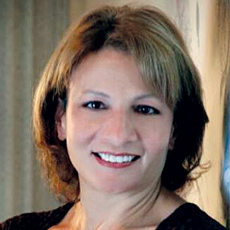

The White House recently released plans to escalate demands on already-stressed skilled nursing facilities.
According to the statement released in February of this year, SNFs in the US are expected to provide adequate staff that provides satisfactory care, poorly performing facilities will be held accountable if they accept taxpayer dollars, and the results of state surveys will become more detailed and more public so that seniors and their families can make the best decisions for care.
At face value, none of these requirements are anything less than expected. We pride ourselves on giving the best care with the best staff, and we want to publicize our successes. Because a very persistent and ever-mutating virus has created a Public Health Emergency among our geriatric population, the failure of some of our systems has become very public.
The OIG says 1.4 million people live in SNFs, and because of the results of their inspections that raised concerns regarding staffing levels, background checks and lack of reporting of adverse events, they must take action. The pandemic has generated a new plague of fines, censures, restrictions and closures.
The chain and franchise SNFs will mostly survive. Some have changed their approach to geriatric care and are getting out of the skilled nursing game and focusing on assisted living and home health. Some states are revising their budgets to boost wages to increase staffing ratios and employee retention.
In the face of rising costs, federal cuts and vast numbers of employees leaving the workforce, how can the small operators survive?
I have worked for national companies with 600+ SNFs. I have also worked for small companies with one or two facilities. My best experiences have been with the latter. Some of the larger companies will forever be stable and profitable in the face of all the cuts, slings and arrows, and may survive by cutting corners, delivering paper-compliance care, and dropping the extra services in favor of the bottom line.
In my experience, small facilities, operated by a single owner or a board of trustees, always seem to deliver the best care. They know the residents, they know their needs, and the corporation is invested in outcomes.
Working for a large company, if I saw an operation that wasn’t working, I would submit a policy change. Five levels of red tape and three months later, I would hear that my change was declined. Conversely, working at a mom-and-pop, where the owner was available within 24 hours, gave me the approval to change the policy for the benefit of the residents. That kind of immediacy improved lives.
I fear for the little guys, the mom-and-pop nursing homes.
Over 300 small-owner facilities closed over the pandemic so far, and 400 more are expected to close. Those that have closed are typically urban facilities that rely on Medicaid. With the demand for staff increasing and the 2023 federal cuts looming, the facilities that are not affiliated with a chain may be doomed.
What becomes of those seniors whose facilities close? Will the burden fall on home health and assisted living? Will the burden fall on their families? The small-owner buildings that provide the best and most thorough care are projected to fail, leaving the geriatric population to fend for themselves.
We need to work with our congressional representatives, both at the state and federal levels, to increase awareness of how our seniors require care that can only be provided in our environments. Pushing for higher wages and increased staffing levels while simultaneously cutting reimbursement can only lead to widespread failure, which will hit the small owners harder and devastate the population we serve.
There is hope. There can be change. A concerted effort by all involved, with the efforts of those who work with us, can alter our results. Talk to your representatives and your state governors. Get your employees, residents and families involved. Change the budgets to get more staff and promote the best care. We can do this.
Jean Wendland Porter, PT, CCI, WCC, CKTP, CDP, TWD, is the regional director of therapy operations at Diversified Health Partners in Ohio.
The opinions expressed in McKnight’s Long-Term Care News guest submissions are the author’s and are not necessarily those of McKnight’s Long-Term Care News or its editors.





